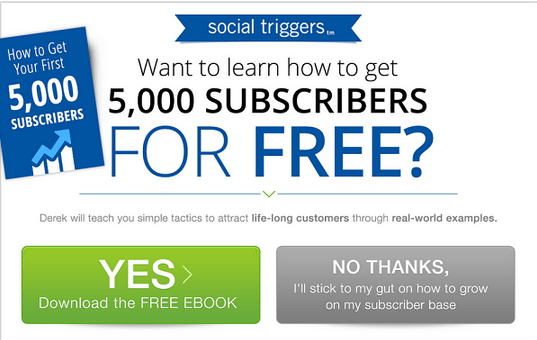One of the long-time feuds in Internet marketing, and more specifically, email marketing, is the dispute on whether or not you should use popups on a website to get people to perform a certain action (usually to sign up for a mailing list).
As with almost all controversies, there is no right or wrong answer to this question. There are two sides to the popup story, and before you decide where you and your website stand, you need to understand both the advantages and disadvantages that come with popups.
Advantages
Let’s start off on a positive note by taking a look at the top 3 advantages of a popup. These benefits are what make loads of people decide to use popups on their sites.
Increased Opt-ins
The most obvious advantage is increased opt-ins. Or, in more general terms, an increase in completions of whatever call to action is highlighted in the popup.
With a popup, you make sure that every visitor that enters your site knows about the action you want to perform.
Case study: David Risley improved his email opt-ins by 250% with a lightbox popup (Blog Marketing Academy).
Increased Conversions
Conversion rate optimization appears to be all the rage in Internet marketing these days, and a good percentage of CRO advocate for the use of popups.
As we discussed in the previous benefit—everybody sees your popup and call to action. Naturally, this improves the conversions you’ll get for that CTA on your website.
Example: Leslie Samuel improved his website conversion rate by 568% overnight with a popup (Popup Domination).
Increased Versatility
Popups don’t just have to be about your mailing list. They’re versatile. They can attract attention to anything you want them to.
For instance, one of your current priorities might be to gain some feedback from your customers. You can do that with a short questionnaire in a popup.
Disadvantages
Despite the increase in opt-ins, conversions, and versatility, popups aren’t without their disadvantages.
Decreased Bounce Rate
Now that bounce rate is an official ranking factor in Google’s search algorithm, webmasters are scrambling to decrease their bounce rate and improve page views per visit. If you’re on a similar campaign and decide to use popups, you could be shooting yourself in the foot.
Popups are notorious for increasing bounce rate. Users are easily put off by them, and so they decide to hit the back button even before taking a second glance at your website. That’s why the timing of a popup is so crucial to its success.
Spammy Look
Popups have always been associated with spam and scams in the past, and the association hasn’t changed much today. By using a popup on your site you could risk being looked at as spammy by your potential customers.

However, as long as you make sure that your popup is a same-window lightbox, and does not open up in a new window, you should be good.
Distracting
If your website content is good and your visitors are able to deeply engage with it, they will no doubt find it distracting to have an opt-in form pop up as they are reading.
This could lead to your content not getting read even by people who originally thought it was good, but then got distracted and stopped reading when they saw your popup.
Expert Opinions
Derek Halpern of Social Triggers, a conversion psychology guru, recommended the use of popups on a website. In fact, he goes so far as to say that “if you’re not using popups, you’re an idiot.”
Here’s a look at the popup Derek uses on his website. Obviously, his is much more sophisticated than the majority of popup plugins out there.
Beth Hayden of CopyBlogger, on the other hand, doesn’t consider popups to be useful. After having tried popups on her own site, Beth decided to take the popup down—hate mail and numerous negative emails that came with the introduction of the popup vetoed her original decision.
And evidently, CopyBlogger has never suffered ill effects from their decision, with a mailing list in the tens of thousands.
Wrapping Up
So what’s the final solution?
A/b test popups on your website to see what works for you. Are you able to sacrifice the decrease in bounce rate and the spammy look for an increase in conversions? Is it a profitable decision for your website?
If so, go ahead and setup a popup plugin on your website. If not, then stay clear until you think it’s time to test again.
Which side do you stand on?
 Jonathan John is a WordPress enthusiast and freelance blogger. He loves comparing WordPress plugins and themes, sharing the latest Automattic news, and helping non-techies get the most out of the world’s favorite CMS.
Jonathan John is a WordPress enthusiast and freelance blogger. He loves comparing WordPress plugins and themes, sharing the latest Automattic news, and helping non-techies get the most out of the world’s favorite CMS.


2 Comments